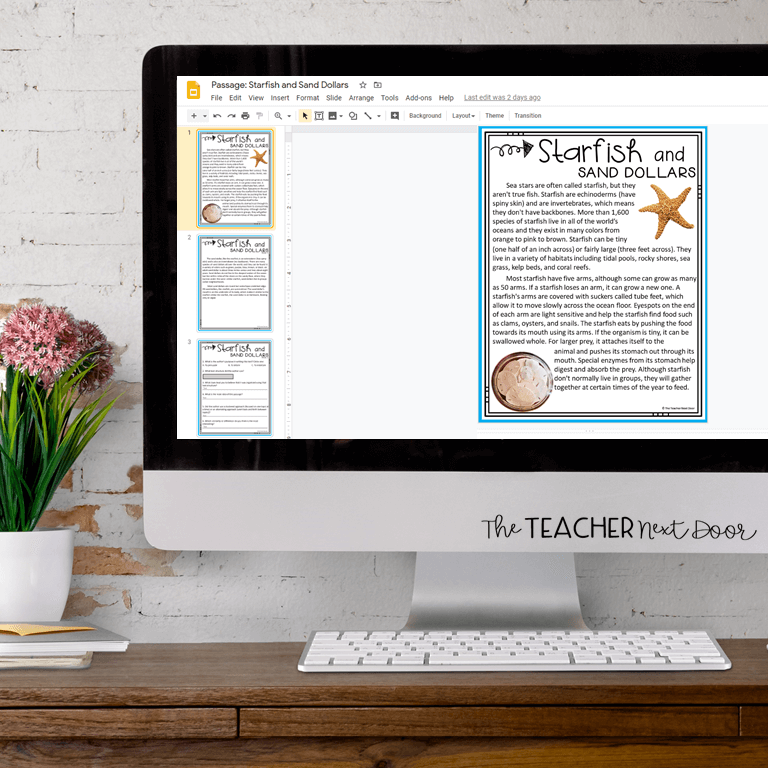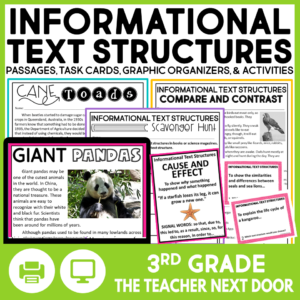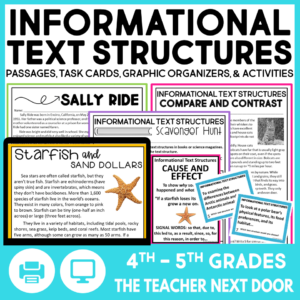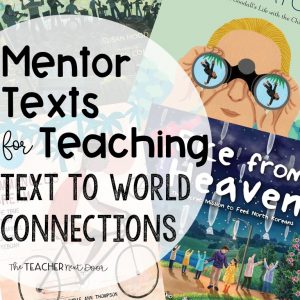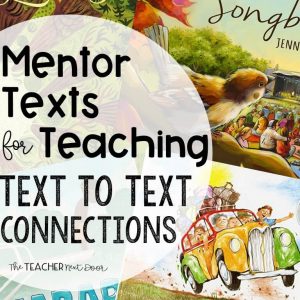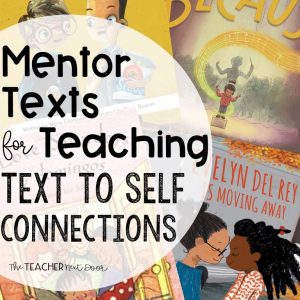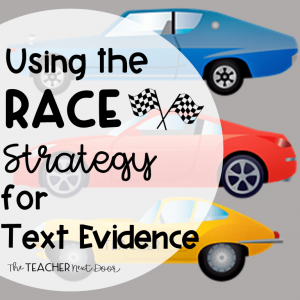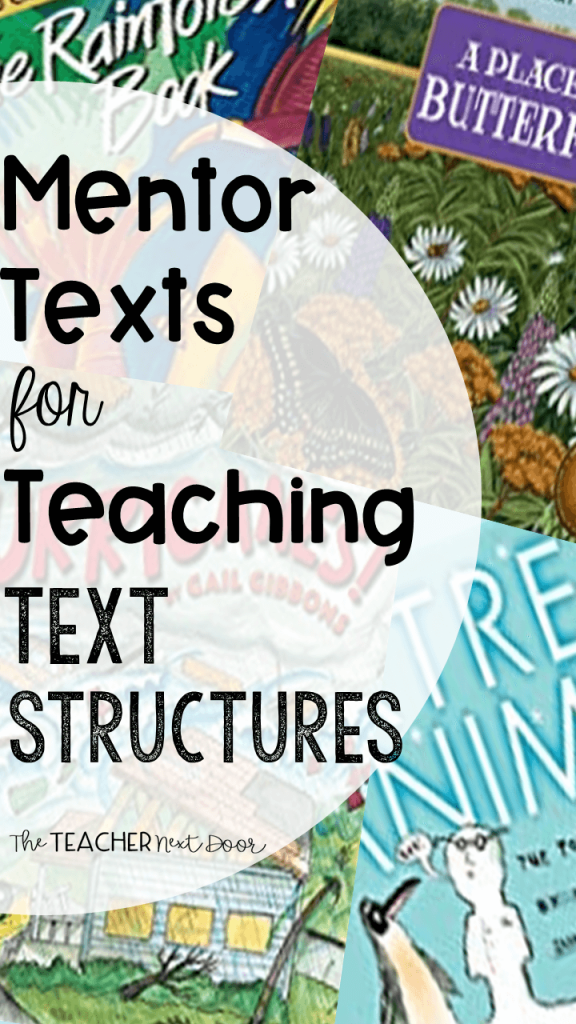
Teaching informational text structures, just like any concept, can be done in a number of ways. One of my favorite teaching strategies though is to use mentor texts.
I love using picture books with upper elementary students because they’re motivating! Another plus is that a mentor text can be completed rather quickly, which is a bonus when the school day is packed with more to teach than time allows.
This post contains Amazon Affiliate links. If you purchase through one of these links, The Teacher Next Door, LLC receives a few cents on the dollar. This commission directly supports us as a small business and ensures that we can continue to create high-quality content for upper elementary teachers, like yourself! As always, the products shared are tried, true, and tested. Enjoy!
Here are the text structures I teach, with some of my favorite mentor texts pictured:
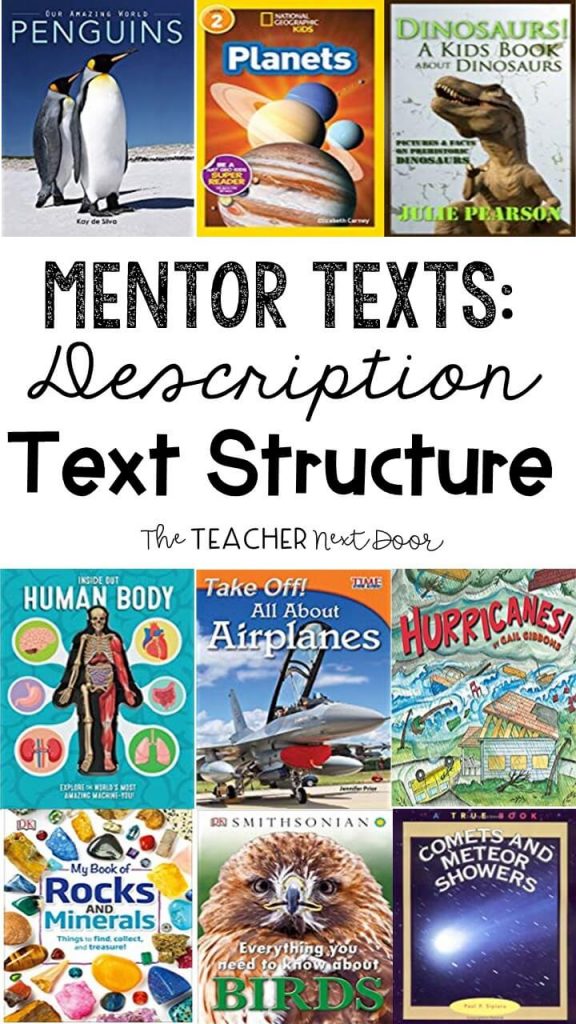
Description
Nonfiction books that describe something, in no particular time order, fall under the description category. These books give lots of facts about a particular subject, like llamas, or bicycles, or Yellowstone Park!
Here’s a list of mentor texts with a descriptive text structure:
- Our Amazing World’s Penguins
- National Geographic’s Planets
- Dinosaurs: A Kids Book Around Dinosaurs
- Inside Out: Human Body
- Take Off! All About Airplanes
- Hurricanes by Gail Gibbons
- My Book of Rocks and Minerals
- Smithsonian’s Everything You Need to Know About Birds
- A True Book: Comets and Meteor Showers
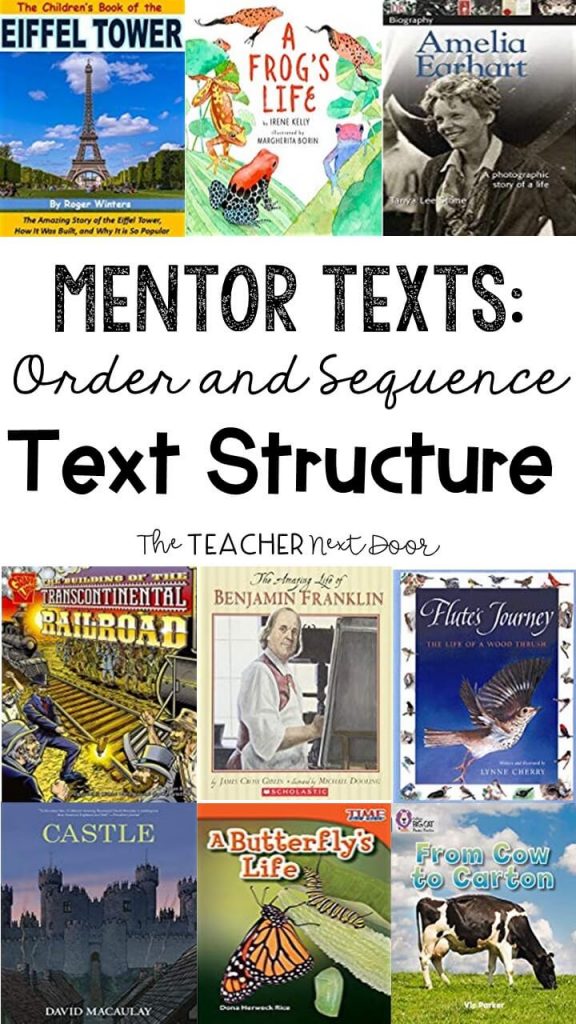
Order and Sequence
Order and Sequence books present informational text topics in chronological order. Many biographies and history books fall into this category.
So, the life cycle of butterflies, Walt Disney’s life story, and the making of the Great Wall could be written with an Order and Sequence text structure.
Here’s a list of mentor texts with an order and sequence text structure:
- The Children’s Book of the Eiffel Tower
- A Frog’s Life
- Biography’s Amelia Earhart
- Building of the Transcontinental Railroad
- The Amazing Life of Benjamin Franklin
- Flute’s Journey
- Castle by David Macaulay
- Time for Kids: A Butterly’s Life
- Milk: From Cow to Carton
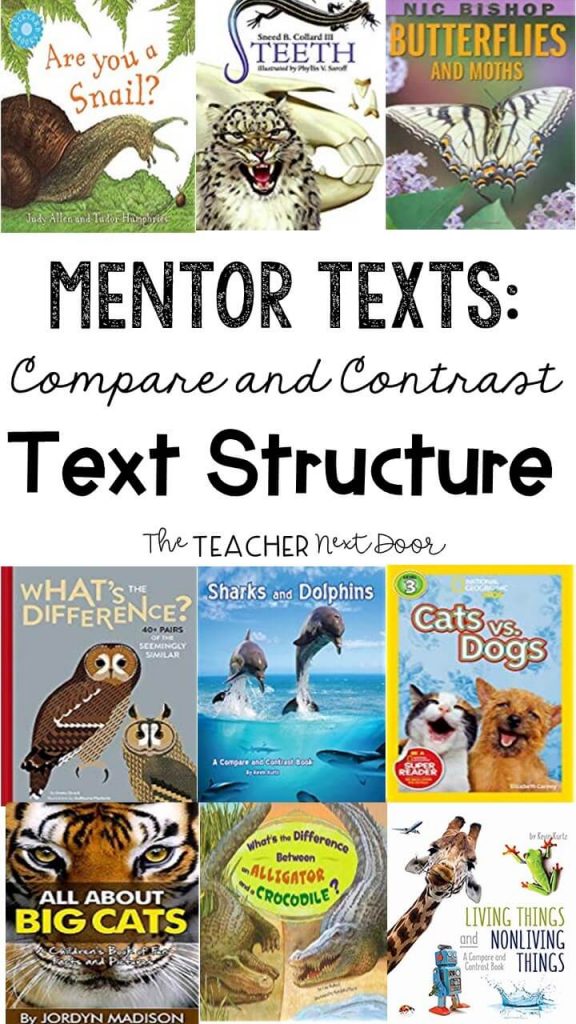
Compare and Contrast
This informational text structure is all about looking at two different people, animals, or things and finding the ways they are alike and how they’re different. Some Compare and Contrast books are written so that the items are compared and contrasted concurrently.
For example, an author might write that dolphins are mammals and have lungs, while sharks are fish and have gills. Other Compare and Contrast books describe the first subject in its entirety and then describe the second subject.
Examples for this category would be books comparing Thomas Jefferson to Benjamin Franklin, hawks to owls, or the Eiffel Tower to the Leaning Tower of Pisa.
Here’s a list of mentor texts with a compare and contrast text structure:
- Are You a Snail?
- Teeth by Sneed B. Collard
- Butterflies and Moths
- What’s the Difference?
- Sharks and Dolphins
- National Geographic Kids: Cats vs. Dogs
- All About Big Cats
- What’s the Difference Between an Alligator and a Crocodile?
- Living Things and Nonliving Things
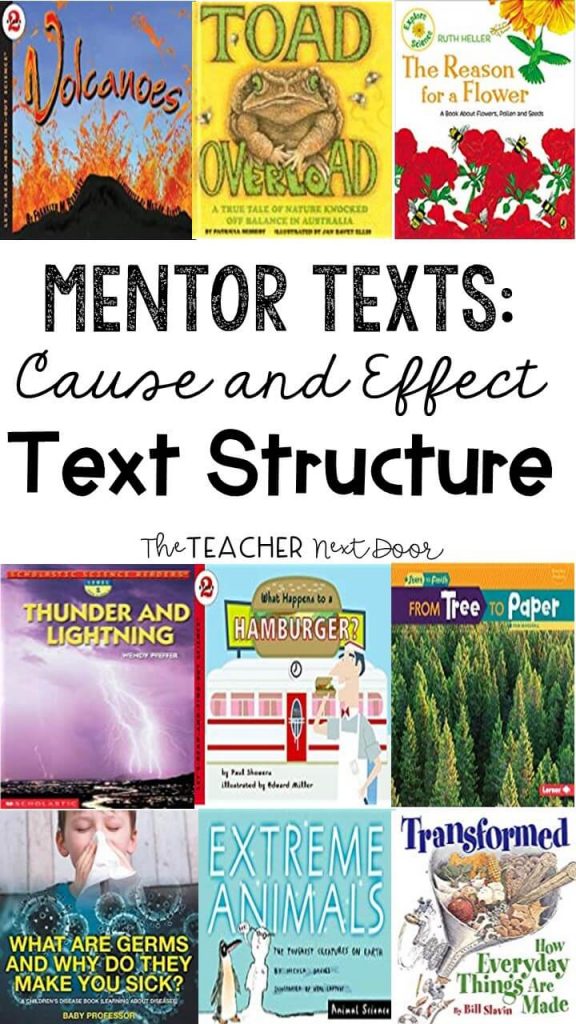
Cause and Effect
Picture books, magazine articles, or any type of passage that is written in the Cause and Effect text structure will show how one event caused another. Topics that have this type of text structure might include animal adaptations, historical events such as war, and naturally occurring phenomena like volcanoes or earthquakes.
This text structure is often confused with Problem and Solution. I do make sure to tell students that if they only see a cause and effect with no solution, it is simply Cause and Effect.
If something happens and a solution is proposed, it’s Problem and Solution. For example, if the author is discussing how some people litter and how it leads to pollution, that’s Cause and Effect. If the author mentions littering as a form of pollution and then tells about how this can be resolved, then it’s Problem and Solution.
Here’s a list of mentor texts with a cause and effect text structure:
- Volcanoes
- Toad Overload
- The Reason for a Flower
- Thunder and Lightning
- What Happens to a Hamburger
- From Tree to Paper
- What Are Germs and Why Do They Make Us Sick?
- Extreme Animals
- Transformed: How Everything Things Are Made
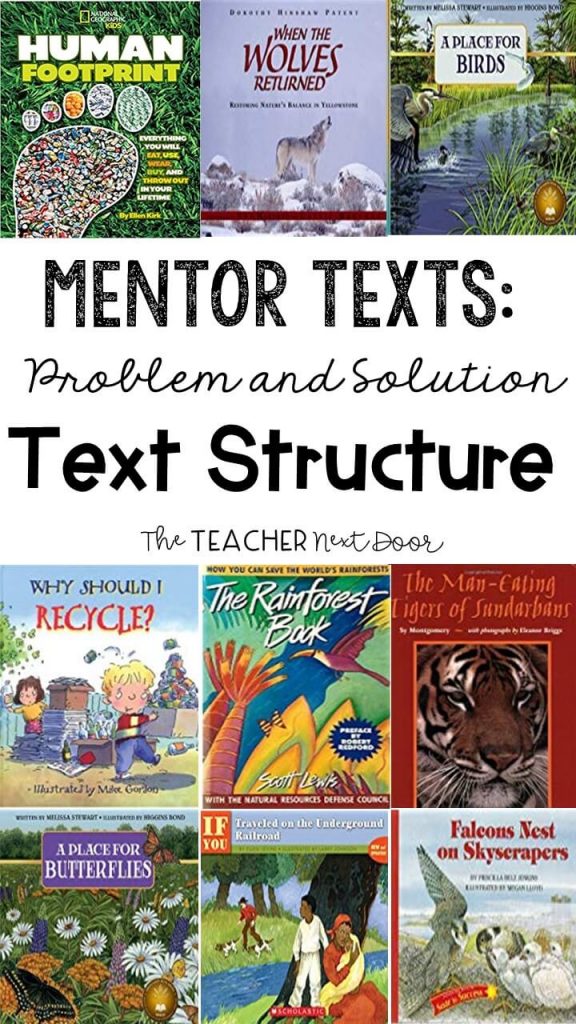
Problem and Solution
Nonfiction books that have the Problem and Solution text structure will present an issue, either past or present, and then describe how it was or could be remedied.
Books with topics such as a zoo’s efforts to save endangered pandas, Rachel Carson’s explanation of how pesticides such as DDT are harmful to birds and other animals and how they should be banned, or a book which discusses how rain forests are shrinking and what we can do to save them are all examples of the Problem and Solution text structure.
Here’s a list of mentor texts with a problem and solution text structure:
- Human Footprint
- When the Wolves Returned
- A Place for Birds
- Why Should I Recycle?
- The Rainforest Book
- The Man-Eating Tigers of Sundarbans
- A Place for Butterflies
- If You Traveled on the Underground Railroad
- Falcons Nests on Skyscrapers
Want to try a really fun scavenger hunt activity for Informational Text Structures?
Click here to read about the Informational Text Structures Scavenger Hunt.
Finally, if you need some new Informational Text Structure materials, I have a unit that I love using. It comes in both print AND digital and has a teaching passage for each text structure, independent passages where students have to figure out the text structure, 32 task cards, posters, a flipbook, graphic organizers, and writing activities.
Click the photos below to see the 3rd grade version or the 4th/5th grade set.
3rd Grade
4th/5th Grade
Thanks for stopping by!


